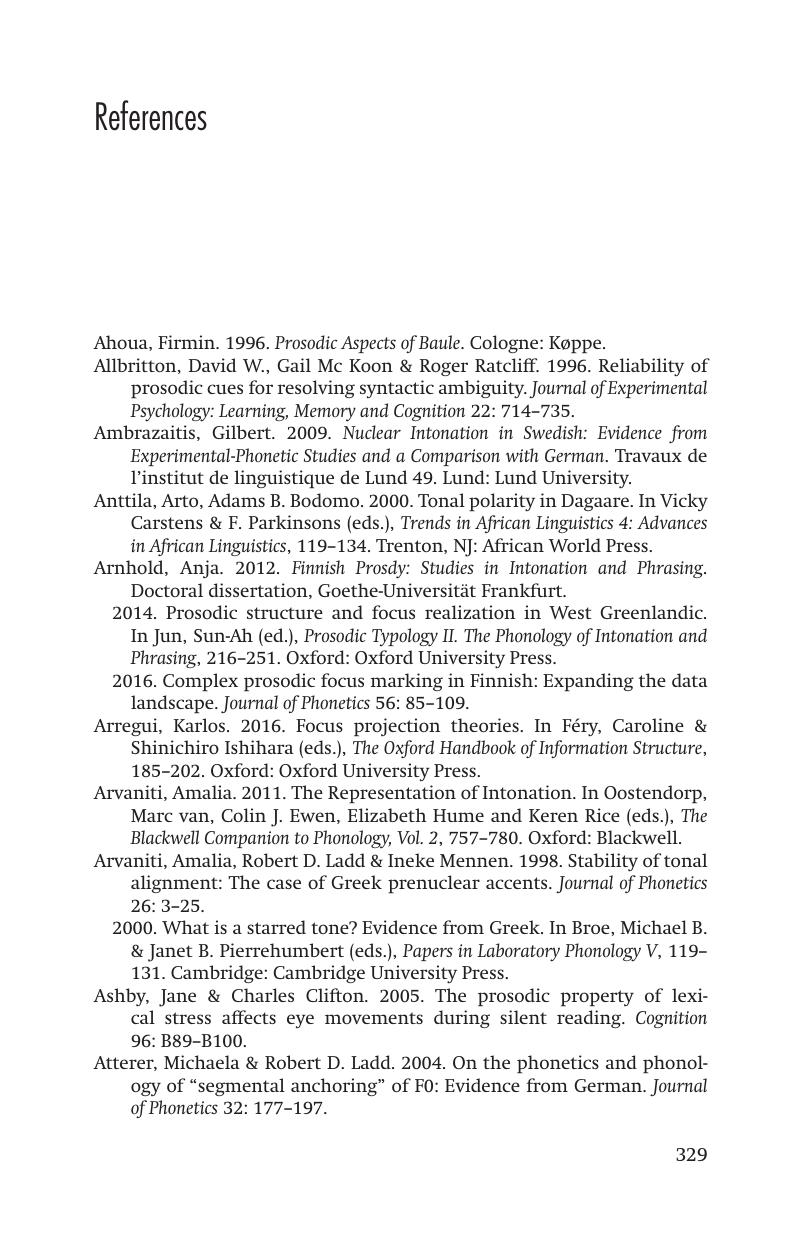Book contents
- Intonation and Prosodic Structure
- Key Topics in Phonology
- Intonation and Prosodic Structure
- Copyright page
- Contents
- Preface
- 1 Introduction
- 2 Phonetic Correlates of Intonation
- 3 Lower-Level Prosodic Constituents
- 4 Intonation and Syntax:
- 5 Models of Intonation
- 6 Intonation and Meaning
- 7 Tone and Stress at the Word Level
- 8 Sentence Intonation in a Typological Comparison
- 9 The Processing of Prosody
- 10 Summary and Conclusion
- Glossary
- References
- Name Index
- Language Index
- Subject Index
- References
References
Published online by Cambridge University Press: 20 January 2017
- Intonation and Prosodic Structure
- Key Topics in Phonology
- Intonation and Prosodic Structure
- Copyright page
- Contents
- Preface
- 1 Introduction
- 2 Phonetic Correlates of Intonation
- 3 Lower-Level Prosodic Constituents
- 4 Intonation and Syntax:
- 5 Models of Intonation
- 6 Intonation and Meaning
- 7 Tone and Stress at the Word Level
- 8 Sentence Intonation in a Typological Comparison
- 9 The Processing of Prosody
- 10 Summary and Conclusion
- Glossary
- References
- Name Index
- Language Index
- Subject Index
- References
Summary

Information
- Type
- Chapter
- Information
- Intonation and Prosodic Structure , pp. 329 - 362Publisher: Cambridge University PressPrint publication year: 2016
